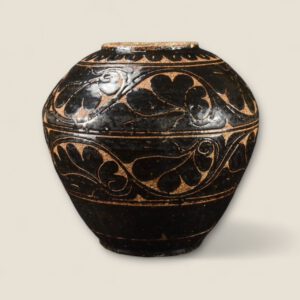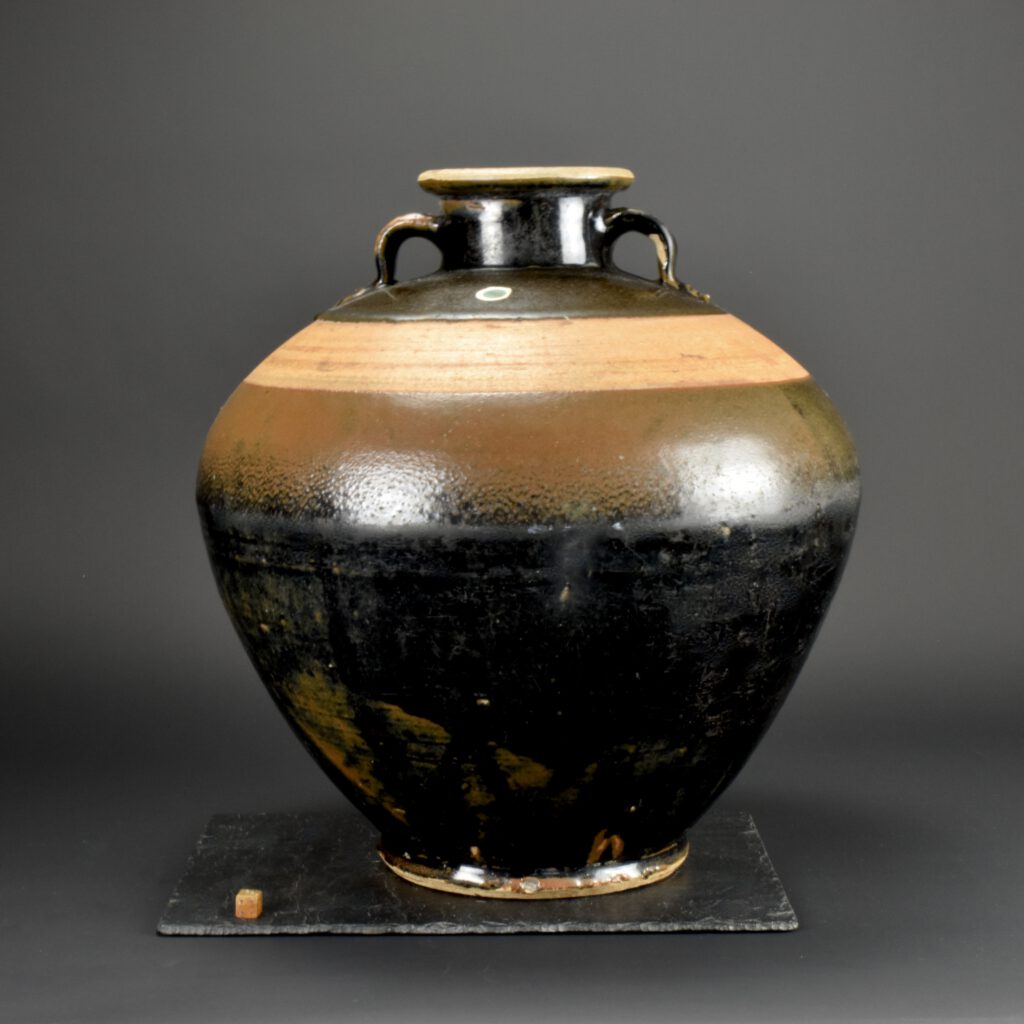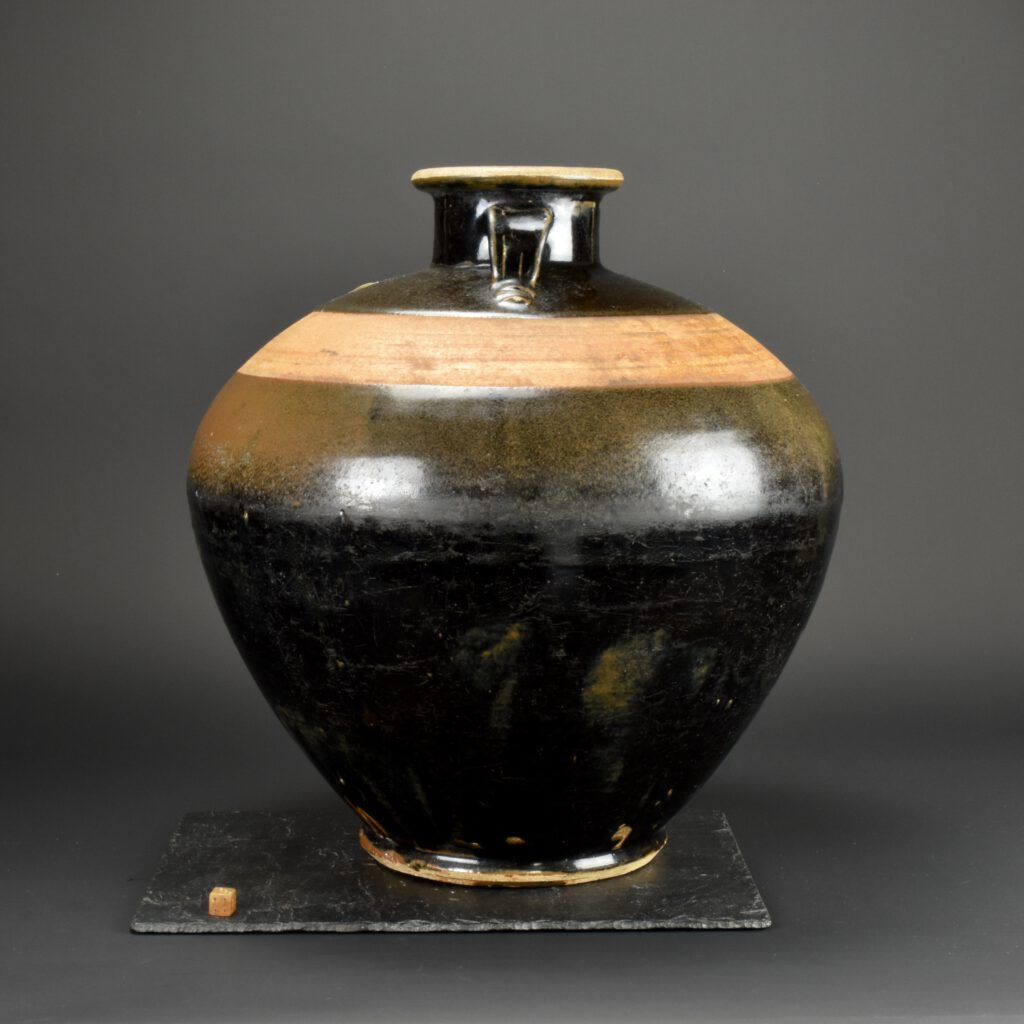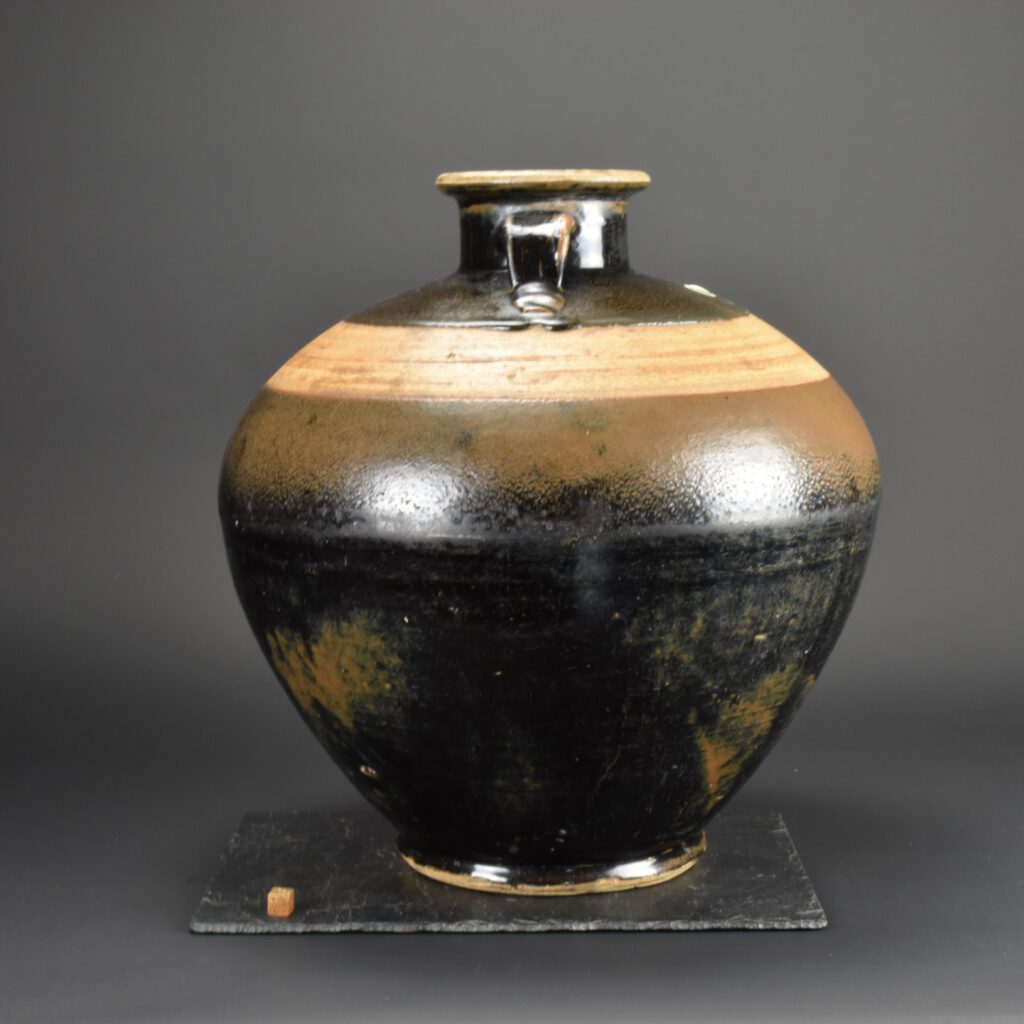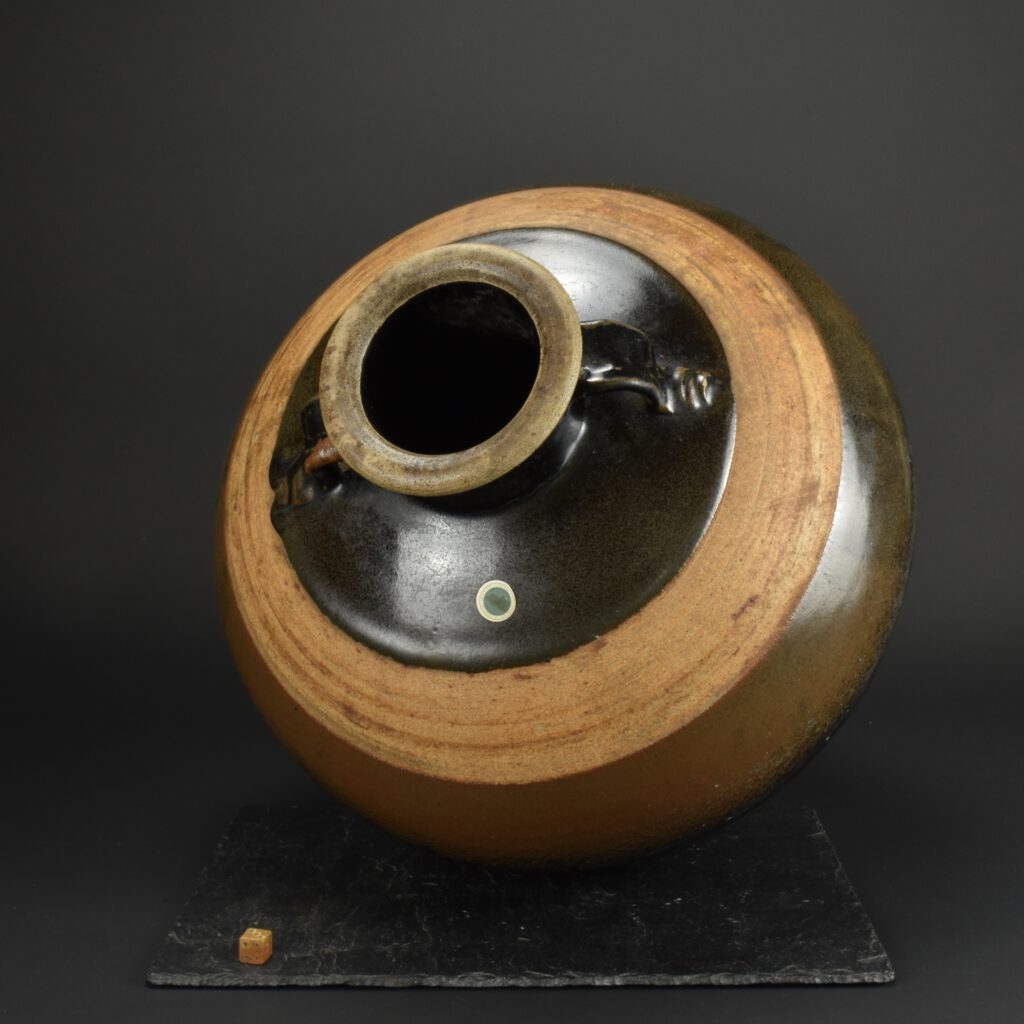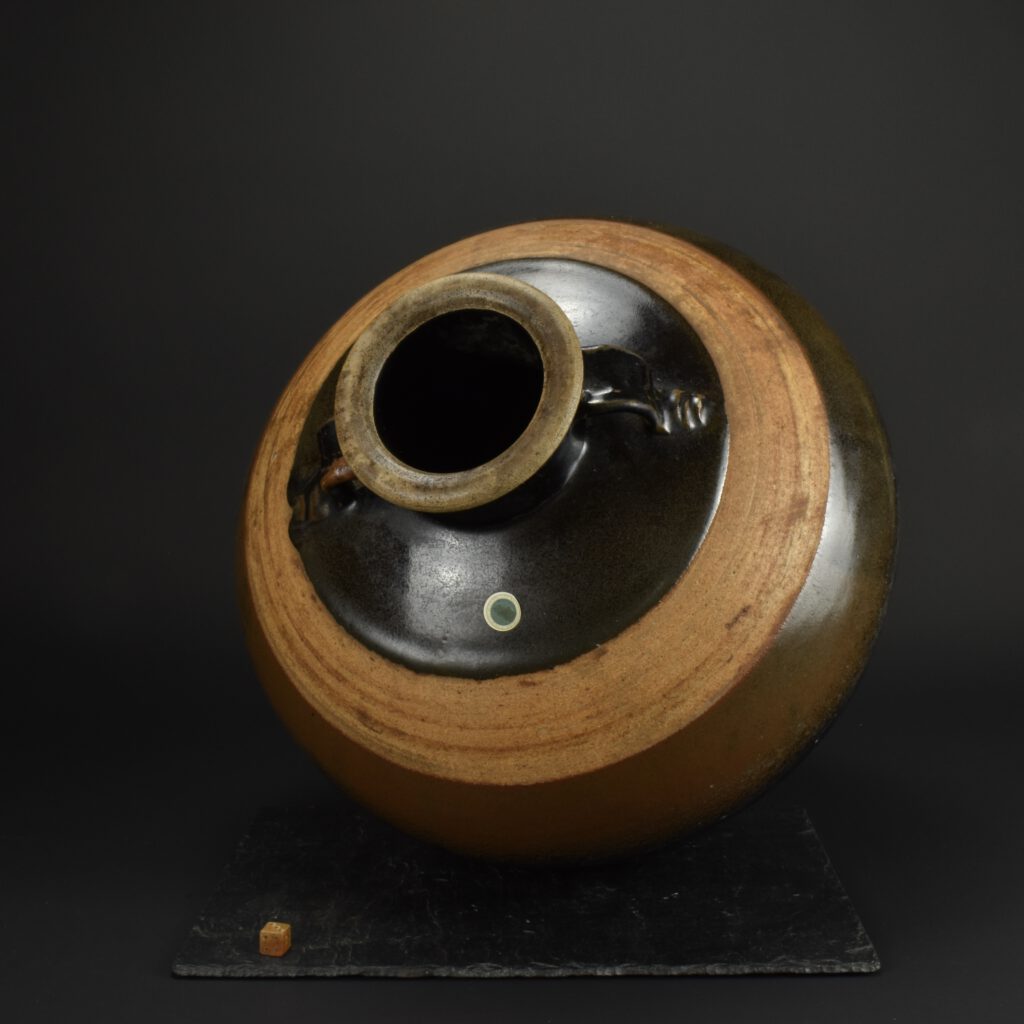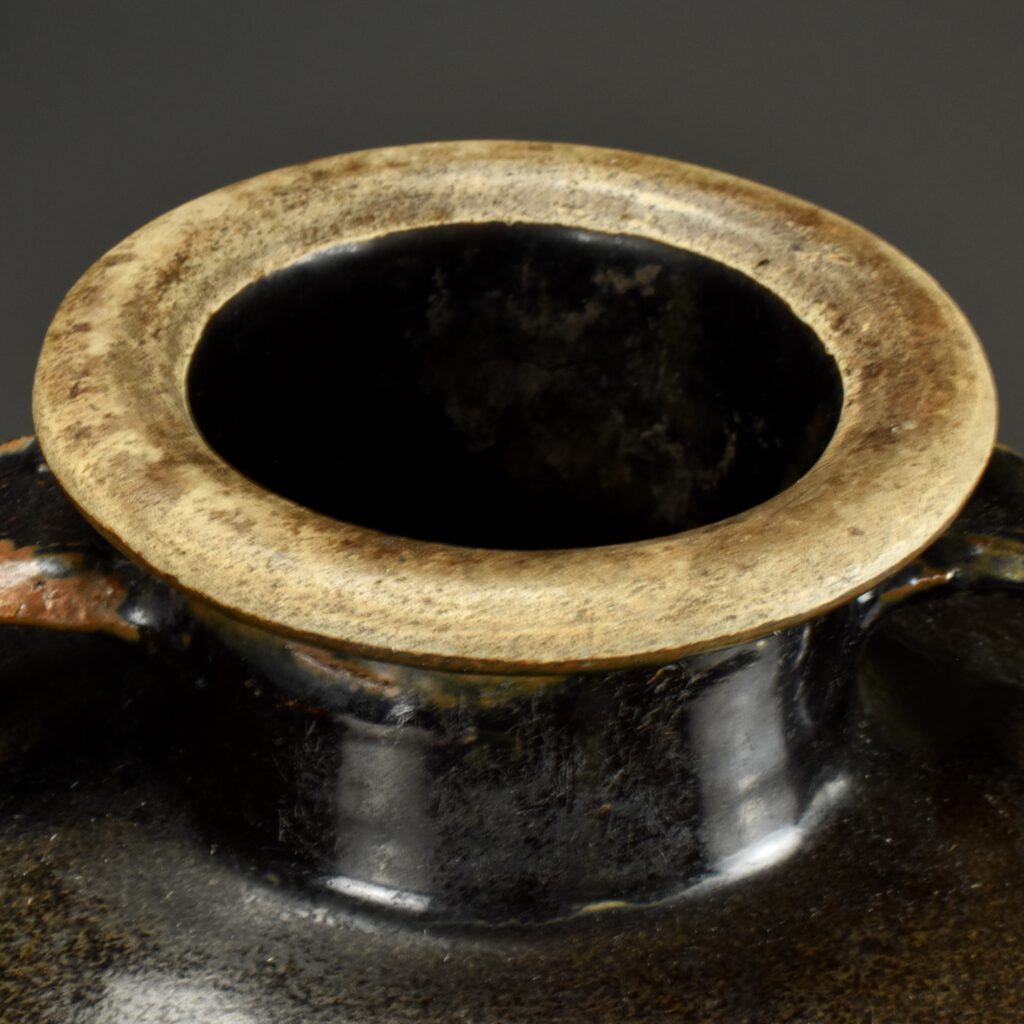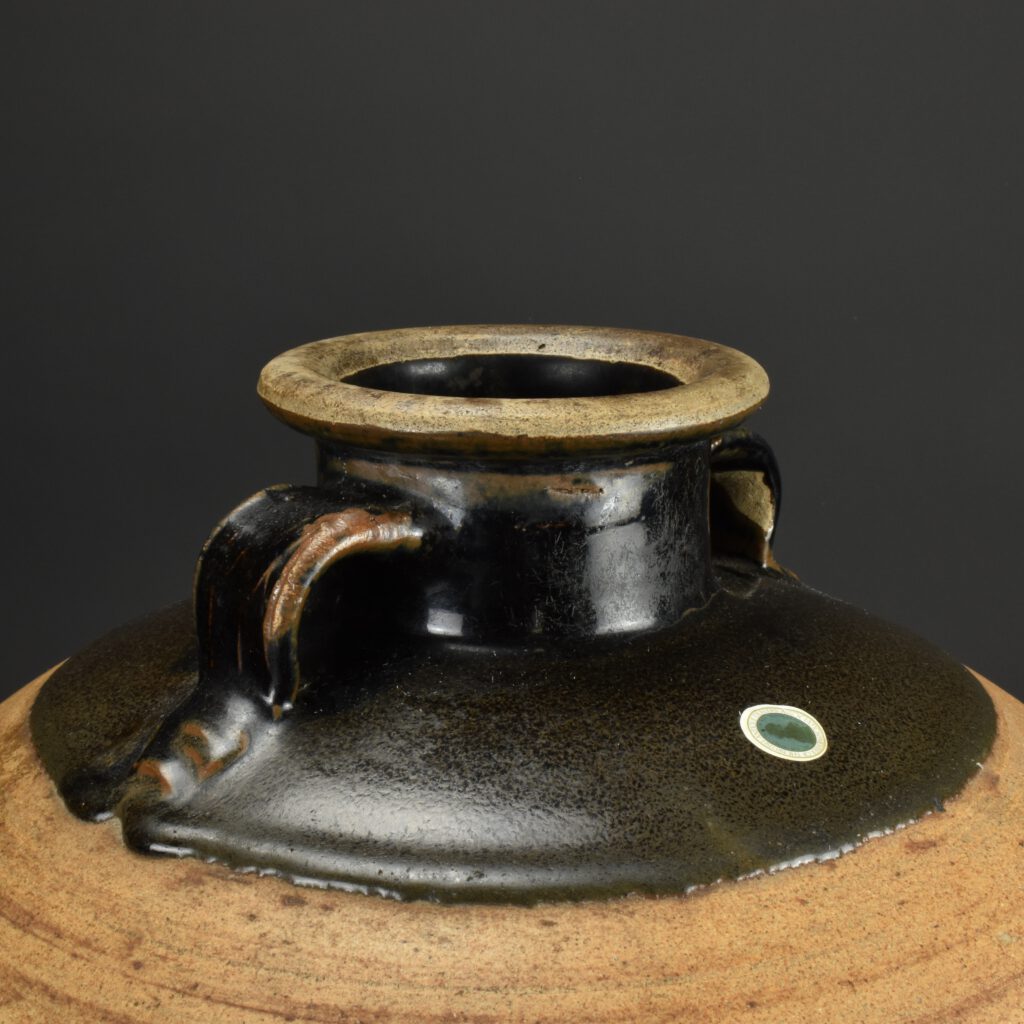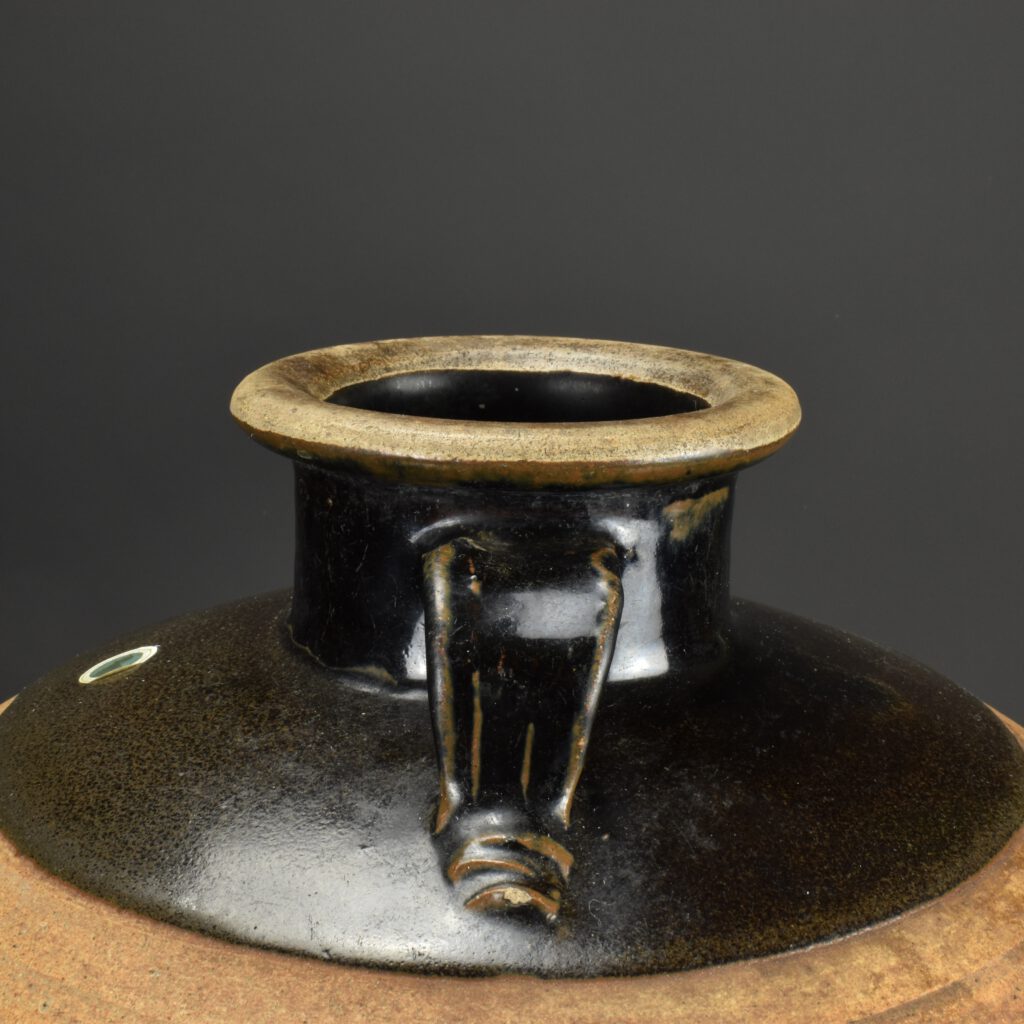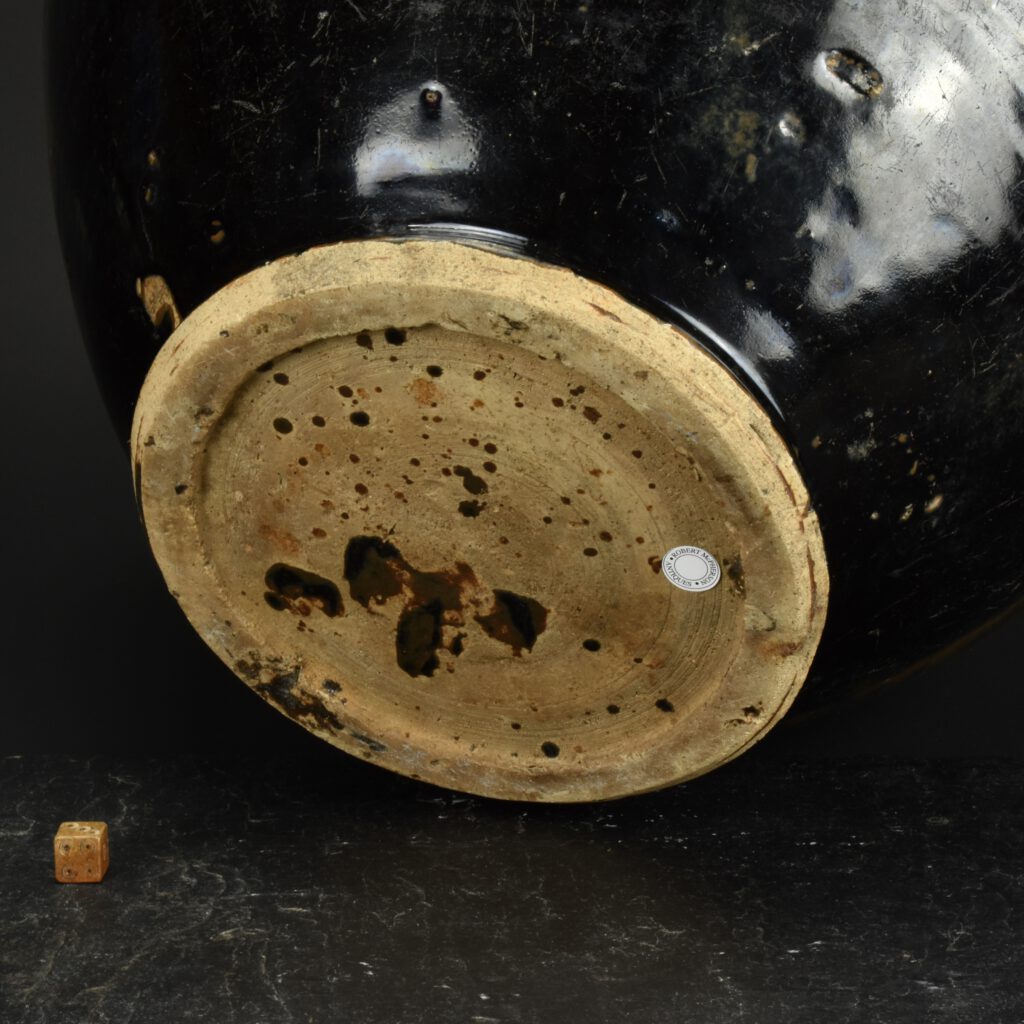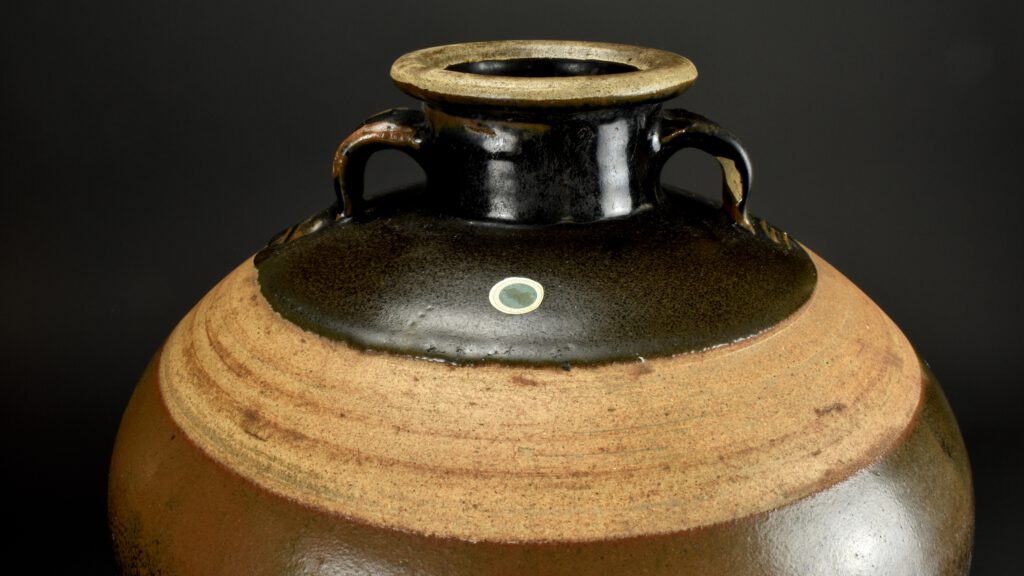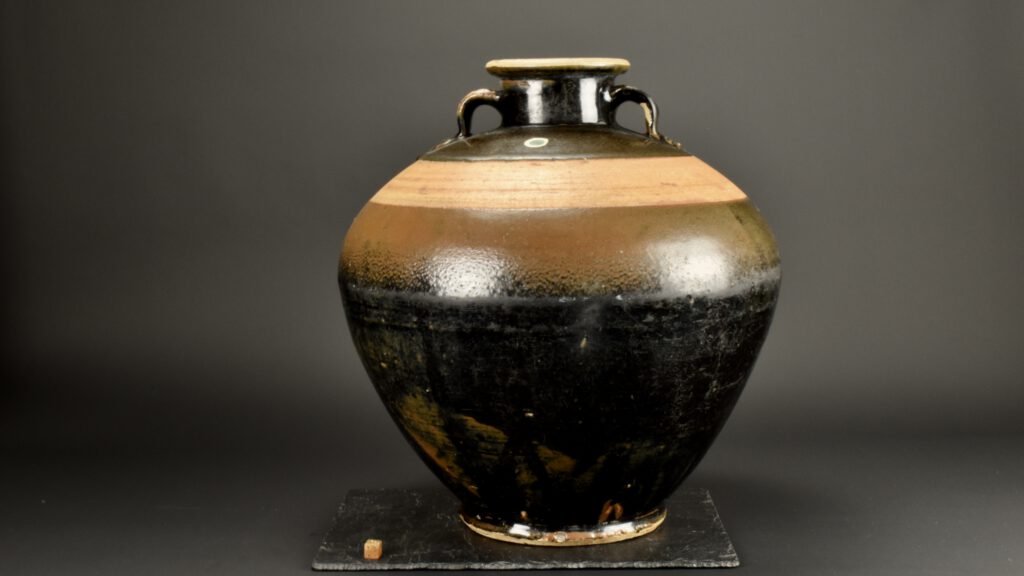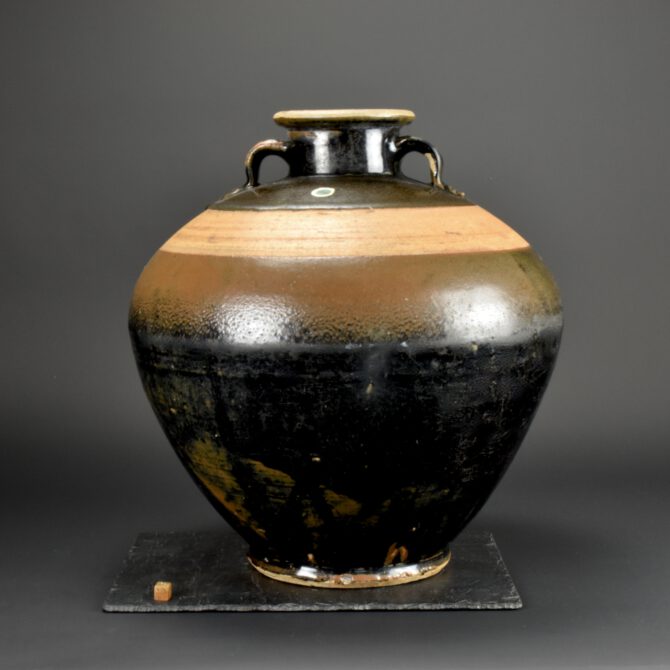
A Very Large Ming Stoneware Jar of Cizhou Type
A Very Large Ming Stoneware Jar of Cizhou Type, North China c.1450-1600. This substantial heavily potted Ming jar is decorated in an iron-rich glaze, perhaps containing as much as 5% iron oxide. The glaze varies in colour and thickness, below the widest point and above the unglazed section the glaze is a rich, thick, deep black with some brown mottling and a few areas that are russet brown. Below the unglazed section is the glaze is thinner, so it has fired brown, the glaze gets thicker nearer the center of the jar, the brown becomes mottled with specks of black become more prominent, until reaching the center where the glaze becomes black. The flared top rim has the glaze wiped clear before firing. The wide unglazed band probably had some form of protection against the glaze from above running down during firing, perhaps a layer of wax was painted on. The ribbed strap handles join the body like an indented ribbon, this is decorative feature, but it might also have helped the join the handles to the body. Although the kiln areas of Cizhou production were primarily concentrated in the northern provinces of Hebei, Henan, and Shaanxi, it is very difficult to pinpoint where this Ming jar was made, hence the lose attribution to ‘North China’.
See Below For More Photographs and Information.
SOLD
- Condition
- In very good condition, some wear ro the side.
- Size
- Height 43.3 cm (17 inches) Diameter 36.3 cm (14 inches)
- Provenance
- From a Private English Collection.
- Stock number
- 27464
Information
Cizhou Ware :
A freedom of expression exists in Cizhou ware that is unparalleled by other Song dynasty (960-1279) ceramics. This was a direct result of not being under the control of the court; consequently, the liberty to explore and experiment created an innovative range of designs full of flavour and life unique to Cizhou ware. The utilization of enamelled decorations in tones of vivid reds, yellows, and greens on occasional Cizhou pieces placed it centuries ahead of its time as this was not kosher for early court wares. The ware also displays an amazing dexterity in the sketchily incised patterns which have such a sense of carefree abandon that they appear impressionistic. Today, Cizhou ware is prized for its natural appearance which often reveals the potter’s process from the wheel’s rings, to the inner spur marks, to the unevenly glazed base.
The white stonewares of the Tang dynasty (618-906) produced two extremely influential wares; the first, Ding ware, became the official ware while the second, Cizhou, became the “popular ware” among the varying classes. It was Cizhou wares utilization by society that assured its continuance during political and dynastic changes which extinguished other Song wares; consequently, Cizhou ware is still produced today though the wares created during the Song dynasty are considered to possess an unrivalled spirit. Since Cizhou ware embodies a diverse range of wares not confined to a specific location, kiln complex, or style it is difficult to precisely define its characteristics.
The name Cizhou originated from the ancient area of Cizhou, encompassing a broad arc across China, which was first recorded during the Sui dynasty (581-618). However, the location constantly shifted and though the area of Cizhou is mentioned in the Tang dynasty (618-906) and Five Dynasties (906-960), each referred to an altered location.During the Song, Jin (1125-1234), Yuan (1279-1368), and partly into the Ming dynasties (1368-1644) the kiln areas of Cizhou were primarily concentrated in the northern provinces of Hebei, Henan, and Shaanxi. (By Mindy MacDonald).
A Large Carved Yuan Dynasty (1279-1368).
Black Glazed Sgraffito Stoneware Guan of Cizhou Type, North China.
Robert McPherson Antiques - Sold Archive, Item 27166.
